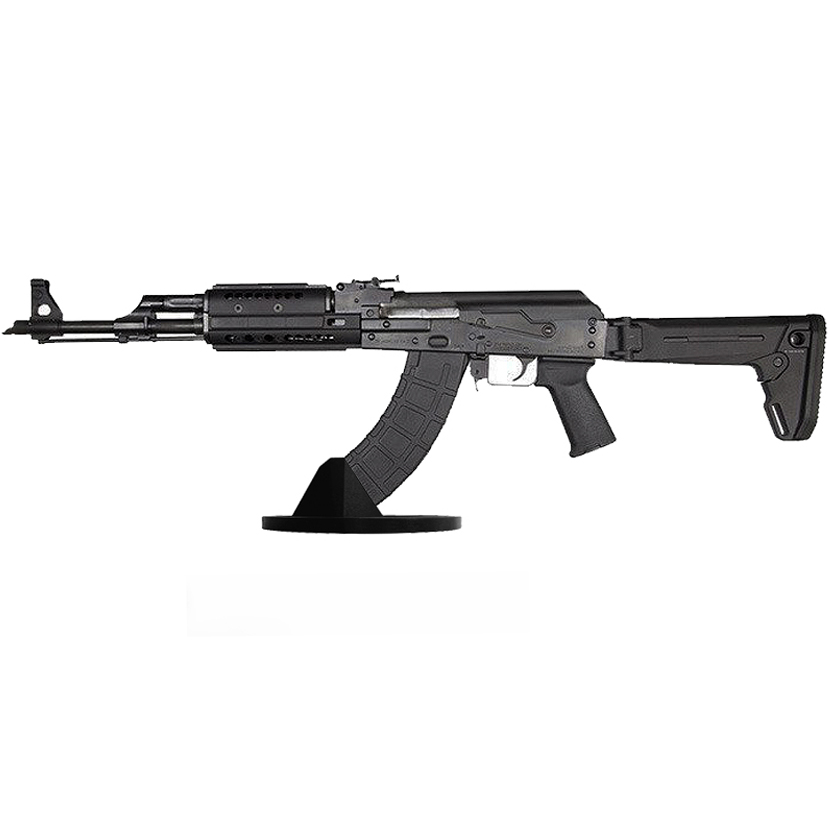
Categories:
The AK-47, designed by Mikhail Kalashnikov in the late 1940s, is renowned for its durability, simplicity, and reliability. One key aspect of the weapon’s design that has seen significant evolution is its stock, particularly the buttplate—the rear surface of the stock that provides shoulder support. This component has evolved over time to enhance functionality and adaptability in various combat scenarios.
Initially, the AK-47 featured a fixed wooden stock with a metal buttplate. This early design reflected the Soviet Union’s emphasis on mass production and cost efficiency. The wooden stock was robust but relatively heavy and prone to damage from environmental factors like moisture and extreme temperatures. The metal buttplate added durability but could be uncomfortable during extended firing sessions due to its rigidity.
As combat needs evolved, so did the AK-47’s stock design. The advent of modern materials led to the introduction of polymer stocks in later models such as the AKM (a modernized version of the original AK-47). These polymer stocks were lighter and more resistant to environmental wear while retaining structural integrity. The buttplate also saw improvements; it was often textured or rubberized to provide better grip against a soldier’s shoulder, reducing recoil impact and increasing shooting stability.
In specialized versions like those used by paratroopers or special forces, folding stocks became prevalent. These stocks could be either side-folding or under-folding designs made from metal or composite materials. They allowed for greater maneuverability in confined spaces without sacrificing too much stability when deployed for firing.
In recent years, modularity has become a critical feature in gun design, influencing newer iterations of the AK-47 stock. Modern aftermarket options include adjustable stocks with customizable length-of-pull settings and enhanced buttplates that offer superior ergonomics and shock absorption.
Through these various stages—wooden fixed stocks with basic metal buttplates evolving into advanced polymer designs with ergonomic enhancements—the historical evolution of the AK-47’s stock demonstrates an ongoing commitment to improving soldier effectiveness while maintaining the iconic reliability for which this gun is known.
The AK-47, a renowned and widely used assault rifle, owes much of its reliability and durability to the materials used in its construction. One critical component is the buttplate, which is affixed to the rear surface of the stock to provide shoulder support during firing. The materials selected for manufacturing AK-47 buttplates have evolved over time, reflecting advancements in technology and changes in military requirements.
Initially, many AK-47 buttplates were constructed from steel or iron. These metals offered significant advantages due to their strength and durability, ensuring that the buttplate could withstand the rigorous conditions of combat. Steel buttplates provided robust protection against physical impacts and environmental stressors such as moisture and temperature fluctuations. However, these metal components also added substantial weight to the weapon, potentially affecting maneuverability.
In later years, manufacturers began experimenting with lighter materials without compromising on strength. The introduction of aluminum alloy buttplates marked a significant shift in design philosophy. Aluminum alloys retained much of the durability offered by steel but with significantly reduced weight. This made it easier for soldiers to handle their weapons over extended periods without experiencing fatigue.
The progression did not stop there; synthetic polymers emerged as another material option for AK-47 buttplates. Polymers such as Bakelite became popular due to their lightweight nature combined with impressive resilience against impact and corrosion. Bakelite’s non-conductive properties also provided an additional layer of safety when handling electronic equipment or during adverse weather conditions.
Modern iterations may incorporate advanced composites—materials that combine fibers like carbon or glass with resin matrices—to achieve an optimal balance between weight reduction, strength, and durability. These composites offer exceptional resistance to wear and tear while maintaining structural integrity under extreme conditions.
In summary, the evolution from heavy metals like steel to advanced synthetic polymers highlights ongoing efforts to enhance weapon performance through material innovation. Each material choice reflects a careful consideration of factors such as weight, durability, resistance to environmental stressors, and overall functionality on the battlefield.
The AK-47, a rifle renowned for its durability and reliability, also pays attention to the ergonomics and comfort of its users through the design of its buttplate. The buttplate, situated at the rear surface of the stock, plays a crucial role in ensuring that the gun is not only functional but also comfortable to use over extended periods.
Ergonomically designed buttplates are essential for effective shoulder support, helping to distribute recoil forces more evenly across a larger surface area. This distribution minimizes felt recoil, reducing shooter fatigue and discomfort. The AK-47’s buttplate is typically crafted from either metal or polymer materials—each chosen for their balance between durability and comfort. Metal offers robustness and longevity, while polymer provides a slight cushioning effect that can be advantageous during prolonged shooting sessions.
A well-designed buttplate fits snugly against the shoulder pocket, which is critical for maintaining control over the weapon during rapid-fire sequences or in high-pressure situations. A secure fit reduces slippage and enhances overall accuracy by providing a stable platform from which to shoot. This stability allows shooters to maintain consistent aim without having to readjust their grip frequently.
Moreover, some modern adaptations of the AK-47 have integrated additional ergonomic features into their buttplates. These may include textured surfaces or rubberized padding that further enhance grip and comfort. Such enhancements are particularly beneficial in adverse weather conditions where moisture or sweat could otherwise compromise stability.
In addition to physical comfort, ergonomic considerations extend to reducing long-term strain on muscles and joints. A thoughtfully engineered buttplate helps distribute weight more evenly across the body’s musculature, mitigating undue stress on specific areas such as shoulders or arms. This holistic approach ensures that even shooters with less upper body strength can handle the rifle effectively without experiencing significant discomfort.
Ultimately, while often overlooked in discussions about guns engineering, the ergonomic design of an AK-47’s buttplate significantly contributes to both immediate shooting comfort and long-term usability. By prioritizing these elements, designers help ensure that this iconic weapon remains practical and user-friendly under diverse conditions.
When it comes to the AK-47, one often overlooked component that significantly affects the shooting experience is the buttplate. The rear surface of the stock, or buttplate, plays a crucial role in providing shoulder support and enhancing overall gun stability. While it might seem like a minor detail, different types of AK-47 buttplates can drastically alter both comfort and performance.
Traditional wooden stocks often come with metal buttplates. These are typically made from steel or aluminum and offer durability and longevity. Metal buttplates are known for their ability to withstand harsh conditions without deteriorating. However, they can be less forgiving on the shoulder during extended firing sessions due to their rigid nature. This can cause discomfort over time, especially for shooters who engage in prolonged use.
On the other hand, modern polymer stocks frequently incorporate rubberized or cushioned buttplates. These are designed with ergonomics in mind, aiming to provide better shock absorption and reduce recoil impact on the shooter’s shoulder. Rubberized buttplates are particularly popular among sport shooters and those who prioritize comfort over tradition. They offer enhanced grip against clothing or body armor, ensuring that the rifle remains stable during rapid fire sequences.
Another variation includes adjustable buttplates which allow shooters to customize length of pull (LOP). Adjustable models often feature sliding mechanisms that let users modify stock length according to their body size or shooting stance. This adaptability makes them a preferred choice for tactical applications where quick adjustments might be necessary.
Comparing these different types reveals that while traditional metal buttplates excel in durability and historical authenticity, modern rubberized options lead in comfort and usability under strenuous conditions. Adjustable versions provide a middle ground by offering customization without compromising too much on either durability or comfort.
Ultimately, choosing the right AK-47 buttplate depends largely on individual needs and preferences. Whether prioritizing historical accuracy with metal designs or seeking enhanced ergonomics through modern materials, each type offers distinct advantages tailored for specific shooting experiences.
The buttplate of an AK-47, situated at the rear surface of the stock, plays a crucial role in influencing shooting accuracy and stability. Often overlooked, this component is essential in ensuring that the gun aligns correctly with the shooter’s shoulder, thereby facilitating better control and precision during firing.
One of the primary ways in which the buttplate impacts shooting accuracy is by providing a consistent point of contact between the shooter and the weapon. This consistency minimizes variables that could affect aim, allowing for more precise shots. A well-designed buttplate distributes recoil evenly across the shoulder, reducing felt recoil and preventing excessive movement that could otherwise throw off aim.
By mitigating recoil effectively, it enables shooters to maintain their position and sight alignment for follow-up shots.
Moreover, stability is significantly enhanced by a properly fitted buttplate. The texture and curvature of this component are designed to grip comfortably against clothing or tactical gear without slipping. This secure fit ensures that once a shooter has shouldered their rifle, it remains firmly in place throughout multiple shots or extended periods of use. The importance of this cannot be overstated; even slight shifts can lead to significant deviations from intended targets over distance.
The material composition of the buttplate also contributes to its overall effectiveness. Materials such as rubber or polymer composites offer both durability and comfort, cushioning impact while maintaining structural integrity under adverse conditions. This dual function not only enhances user experience but also prolongs operational readiness by preventing fatigue-related errors.
Furthermore, modern advancements have seen adjustable buttplates becoming more common on AK-47 variants. These allow users to modify length-of-pull according to individual body dimensions or specific operational requirements. Customizability ensures optimal ergonomic alignment which directly translates into improved shooting posture—another critical factor for sustained accuracy and stability.
In summary, while often underappreciated at first glance, the AK-47’s buttplate is integral to achieving superior shooting performance. Its design characteristics directly influence how effectively a shooter can manage recoil, maintain sight picture integrity, and execute accurate shots consistently—all pivotal aspects for any marksman aiming for excellence.
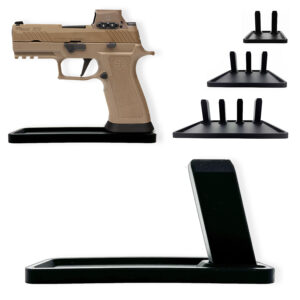
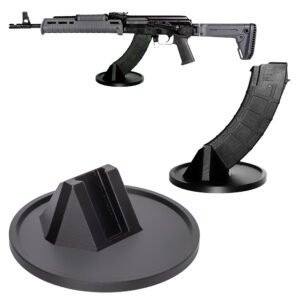

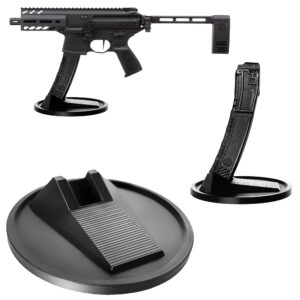
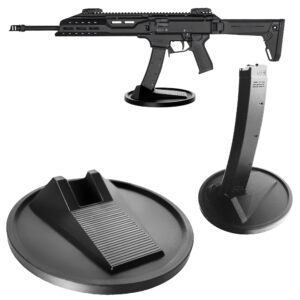


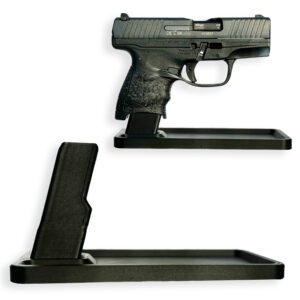
Colt
Colt M4 Carbine
Colt LE6920
Colt AR-15 A4
Daniel Defense
DDM4 V7
DDM4 V9
DDM4 V11
DDM4 ISR (Integrally Suppressed Rifle)
Smith & Wesson (S&W)
M&P15 Sport II
M&P15 Tactical
M&P15T
Bravo Company Manufacturing (BCM)
BCM Recce-16
BCM Recce-14
BCM MCMR Series
Aero Precision
M4E1 Series
AC-15
AR15 Pistol (Various Configurations)
Ruger
Ruger AR-556
Ruger SR-556
Ruger AR-556 MPR (Multi-Purpose Rifle)
Springfield Armory
Saint Victor
Saint Edge
Saint AR-15
PSA (Palmetto State Armory)
PSA PA-15
PSA AR-V
PSA Jakl (AR Pistol)
FN America
FN 15 Tactical Carbine
FN 15 Patrol
FN 15 DMR
Wilson Combat
Recon Tactical
Super Sniper
Protector Carbine
SIG Sauer
SIG M400 Tread
SIG M400 Elite
SIG M400 SDI
LWRC International
IC DI (Direct Impingement)
IC SPR
IC A5
Bushmaster Guns
XM-15 QRC
Bushmaster MOE
XM-15 Patrolman
Rock River Arms
LAR-15 Entry Tactical
LAR-15 Predator
LAR-15 Elite Comp
Stag Arms
Stag 15 Tactical
Stag 15L (Left-Handed Models)
Stag 15 Valkyrie
Noveske Rifleworks
Noveske Gen 4 N4
Noveske Space Invader (AR Pistol)
Noveske Recon
Anderson Manufacturing
AM-15 Optic Ready
AM-15 M4 Carbine
AM-15 Precision Rifle
Adams Arms
AA-15 Piston Rifle
P2 AARS (Adams Arms Rifle Series)
Black Rain Ordnance
SPEC15 Series
BRO Predator
Fallout 15
Diamondback Guns
DB15 Series
DB15CCMLB
DB15EB
Del-Ton Inc.
DTI-15
Del-Ton Echo 316H
Sierra 316M
Windham Weaponry
Windham SRC
Windham VEX-SS
Windham RMCS-4 (Caliber Conversion System)
Christensen Arms
CA-15 G2
CA-15 Recon
CA-15 Titanium Edition
Patriot Ordnance Factory (POF-USA)
Renegade Plus
P415 Edge
Revolution DI
LaRue Tactical
PredatAR
OBR (Optimized Battle Rifle)
LaRue Stealth 2.0
Battle Arms Development
Workhorse Patrol Carbine
BAD556-LW (Lightweight)
Authority Elite Rifle
Faxon Guns
Ascent AR-15
FX-19 (AR Pistol)
Streamline Ultralight Series
KE Arms
KE-15 SLT (Super Lightweight Tactical)
KE-15 Scout Carbine
Primary Weapons Systems (PWS)
MK1 MOD 2-M
MK116 PRO
MK107 (Piston AR Pistol)
ZEV Technologies
ZEV Core Elite Rifle
ZEV AR15 Billet Rifles
Franklin Armory
BFSIII AR-C1
Militia Model
F17-L (Chambered in .17 WSM)
Seekins Precision
SP15 DMR
NX15 Skeletonized Rifle
Havak Bravo
Aero Precision (Additional Models)
EPC-9 (Pistol Caliber ARs)
VG6 AR Rifles
Barrett Guns
REC7 DI
REC7 Gen II
CMMG
MK4 RCE
Resolute 300
Banshee (AR Pistol)
DPMS Panther Arms
Panther Oracle
Panther LR-308
H&K (Heckler & Koch)
HK MR556A1
HK416 (Military Variant)
Rock Island Armory (Armscor)
VR-80 Tactical AR (Shotgun AR Platform)
Troy Industries
Troy SPC-A3
Troy PAR (Pump Action AR)
Wilson Tactical
Tactical Recon AR
Protector Series
F1 Guns
FDR-15 Skeletonized Rifle
BDRx-15 Series
Juggernaut Tactical
JT-15
JT-10 Precision Rifle
AeroSurplus
Surplus AR-15 Rifles (Budget Models)
Thunder Tactical
AR-15 Basic Carbine
Tactical Builder Sets
Radical Guns
RF-15
Forged AR-Series
Dark Storm Industries
DS-15 Featureless Rifles
DS-10 Typhoon
DRD Tactical
Paratus
Aptus AR Rifles
Bear Creek Arsenal
BCA-15
AR Complete Upper Builds
Aero Survival Rifles (ASI)
ASR Tactical Series
Tactical Edge
WARFIGHTER Series
AR-15 Lightweight Rifles
Lone Star Armory
TX15 DMR
TX15 Carbine
HERA Arms
HERA H7
HERA AR-15 Lower Builds
IWI (Israeli Weapon Industries)
Zion-15
DRD Tactical
Tactical Modular Rifles
Quick-Takedown Rifles
V Seven Weapons
1776 Rifle
Hyperlite Rifle
Core Rifle Systems
Core15 Tac III
Core15 Patrol Rifle
Armalite (Original AR-15 Creator)
M15 Tactical
M15 A4 Carbine
DEF15 (Defensive Sporting Rifle Series)
PSA (Palmetto State Armory Additional Models)
PSAK-47 Hybrid (AR-AK Style Hybrid)
PSA Dagger (Pistol Caliber Configurations)
Odin Works
OTR-15
Odin Recon Rifle
Maxim Defense
MDX-508 PDX (Compact AR Pistol)
MDX-510 Rifle